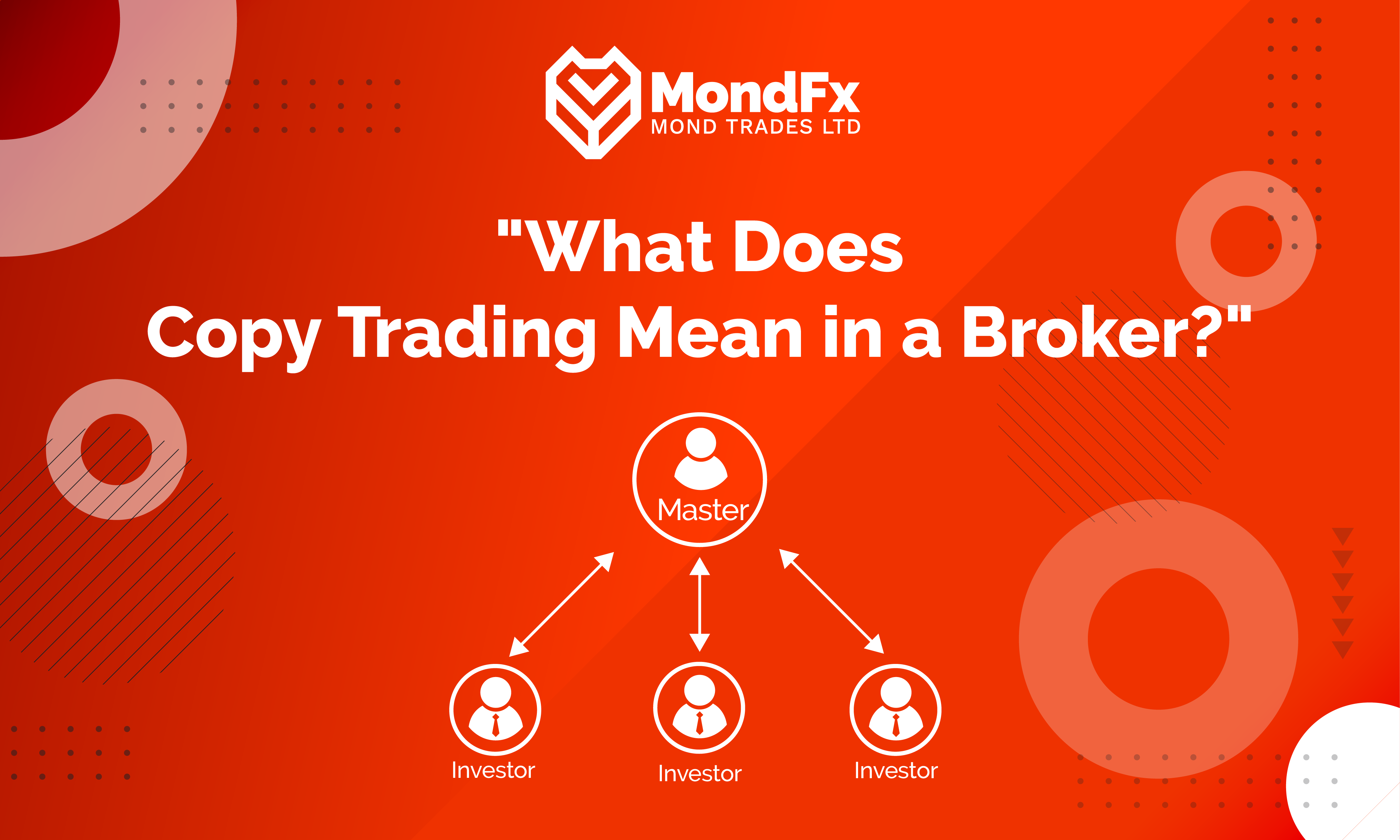Copy trading is an innovative approach to investment that enables traders to replicate the trades of successful and experienced traders. This method is particularly appealing to newcomers to the market or those who do not wish to devote significant time to market analysis.
In copy trading, you select one or more professional traders, and the system automatically replicates their trades in your account. This allows you to benefit from the expertise and strategies of top traders without requiring specialized knowledge or significant time investment.
One of the primary advantages of copy trading is access to a diverse range of trading strategies. You can select traders with varying trading styles to diversify your portfolio. Additionally, this method allows you to manage risk by distributing your capital among multiple traders.
However, copy trading is not without risk. Past performance of traders is not indicative of future results, and your chosen traders may not continue to perform well. Additionally, the associated costs of this service should be considered.
Prior to commencing copy trading, it is imperative to conduct thorough research and select traders with a proven track record and financial transparency. Additionally, it is recommended to initiate with smaller capital amounts and gradually increase your investment.
Ultimately, copy trading can be a valuable tool for traders, but it should not be viewed as a guaranteed method for generating profits. Combining copy trading with personal education and analysis can enhance your overall success in the financial markets.
A brief history of copy trading
In recent decades, seasoned and successful traders have frequently shared their knowledge and experiences with other traders. This sharing of information has taken place through books, seminars, and personal consultations. Novice or less successful traders have sought to leverage this knowledge to enhance their performance.
With the advent of information technology and the internet, the electronic transmission of information became possible. During this period, online platforms began offering trading advice and signal services. These platforms provided buy and sell signals to their users based on technical or fundamental analysis. Traders could then make trading decisions based on these signals.
The next evolutionary step in copy trading was the development of copy trading platforms. These platforms enabled traders to automatically replicate the trades of a successful trader. As a result, traders could benefit from the profitability of professional traders without the need for market analysis or decision-making.
Today, copy trading has evolved into a multi-billion dollar industry. Various copy trading platforms offer traders the ability to select from thousands of professional traders. However, it is crucial to remember that copy trading is not without risk, and success in this domain hinges on the careful selection of traders to copy and appropriate risk management.
The distinction between copy trading and other investment methods
In traditional investment methods such as purchasing stocks, bonds, or mutual funds, investors directly invest in assets. The decision to buy or sell these assets rests solely with the investor. This process necessitates a substantial degree of knowledge and experience in market analysis and the selection of suitable investments.
Unlike traditional methods, in copy trading, investors replicate the trades of one or more professional traders rather than making independent decisions. These traders, often referred to as masters or signal providers, operate in the market using their own strategies. By selecting suitable masters, investors can leverage the experience and knowledge of professional traders.
Another significant distinction lies in the level of investor involvement in the investment process. Traditional methods necessitate substantial time and effort from investors for market analysis and decision-making. In contrast, copy trading assigns these responsibilities to the master, leaving investors to merely select a master and manage their capital.
Furthermore, the risk level associated with copy trading may differ from other investment methods. The selection of an appropriate master and risk management are of paramount importance. While investing in stocks or bonds may carry its own inherent risks, copy trading is also subject to risks linked to the performance of the masters.

The Sequential Steps Involved in Copy Trading
Copy trading, as a popular investment strategy, empowers investors to leverage the expertise of seasoned traders. This process entails several key stages, which will be elaborated upon in the following discourse.
Selecting a seasoned trader is the inaugural and most critical step in copy trading. The chosen trader must possess a history of success and a reliable performance record. Analyzing the trader’s past performance, trading strategies, risk tolerance, and other relevant factors will aid in making an informed decision.
Subsequent to selecting a professional trader, the next step involves linking your account to that of the seasoned trader. This connection is typically facilitated through copy trading platforms. It is imperative to ensure that the chosen platform adheres to stringent security standards and is reliable.
Upon establishing the account connection, the professional trader’s transactions are automatically replicated in your account. This signifies that any trade executed by the trader will be mirrored proportionately in your account. This process occurs autonomously, requiring no direct intervention from you.
The Process of Copy Trading
- Choosing a Reliable Copy Trading Platform
The first step in copy trading is to choose an appropriate platform. Numerous platforms are available, each with its own specific characteristics and fees. Factors such as the diversity of traders, platform security, fees, and customer support should be considered when making a selection.
- Evaluation and Selection of a Professional Trader
Once a platform has been selected, the process of choosing a professional trader begins. Each platform offers a range of traders with varying performance. When making a selection, the following factors should be considered:
Performance History: Conduct a meticulous examination of the trader’s historical performance. Pay particular attention to their profitability, risk tolerance, and duration of trading activities.
Trading Strategy: Evaluate the trader’s strategy and determine if it aligns with your goals and risk tolerance.
Transparency: The trader should provide comprehensive information regarding their trading strategy, performance, and associated risks.
Fees: Some traders charge a fee for their trading signals to be copied. Scrutinize these fees carefully.
- Analysis and Comparison of Traders
Compare the evaluated traders and select the one whose strategy aligns best with your objectives and risk tolerance. Utilize the comparison tools provided by many platforms.
- Linking Accounts to a Trader’s Account
Following the selection of a trader, you must establish a connection between your trading account and the chosen trader’s account. This process is typically conducted online with just a few clicks. During this step, you will need to specify the exact amount of capital you wish to allocate to the copy trading endeavor.
- Commencing the Copy Trading Process
Once your accounts are linked, the selected trader’s trades will be automatically replicated in your account. You retain the flexibility to terminate this connection or select a different trader at any time.
Types of Copy Trading: Manual or Automated?
Copy trading is primarily offered in two forms: manual and automated.
In manual copy trading, investors manually replicate the trades of an experienced trader. This approach empowers investors to make informed trading decisions based on their own analysis and market conditions. A key advantage of this method is its flexibility, allowing investors to selectively copy trades and modify or cancel them as needed.
However, manual copy trading is a time-consuming endeavor that requires constant monitoring. Investors must diligently track the market and follow the professional trader’s decisions. Moreover, there is a risk of missing out on profitable opportunities due to potential delays in executing trades.
Conversely, automated copy trading enables investors to replicate the trades of a professional trader automatically. This method, facilitated by specialized software, allows investors to allocate their time to other pursuits. The primary advantage of automated copy trading lies in its speed and precision of execution, while concurrently mitigating the risk of human error.
However, automated copy trading is not without its limitations. Investors have less control over their trades, and the professional trader’s strategy may not be optimal in all market conditions. Additionally, the costs associated with using copy trading software must be considered.
Ultimately, the choice between manual and automated copy trading hinges on a multitude of factors, including investment experience, the amount of time that can be dedicated to trading, risk tolerance, and investment objectives. Both methods offer the potential for profitable outcomes, but a comprehensive understanding of their distinctions empowers investors to make the most suitable selection for their individual circumstances.

Types of copy trading accounts
Thus far, we have explored the general concept of copy trading and its various types. However, the realm of copy trading extends far beyond simple replication; depending on the platform utilized, a diverse array of options may be available. For instance, MondFX, in addition to standard copy trading accounts, offers two additional account types. A brief overview of these accounts will follow.
PAMM Accounts: These accounts revolutionize the way investors engage with financial markets. Whether you are a seasoned trader or a novice, PAMM accounts provide a unique opportunity to leverage the expertise of professional traders without requiring in-depth trading knowledge.
In this account structure, investors pool their funds into a single account. A skilled trader manages this account and executes trades on behalf of all participants. Ultimately, each investor’s share of the profits or losses is determined by their proportional contribution to the pool.
MAM Accounts: MAM accounts are specifically designed for money managers who oversee multiple trading accounts concurrently. Managers retain complete control, enabling them to tailor risk parameters, trade volumes, and leverage to meet the unique preferences of each client.
Unlike PAMM accounts, where funds are pooled, MAM accounts involve the execution of all trades within the manager’s individual account. This structure provides followers with complete transparency regarding the details of each trade. However, unlike traditional copy trading accounts, users do not have the authority to modify these trades.
For more information regarding social trading accounts, please visit the MondFX website.

Advantages and disadvantages of copy trading
Advantages of Copy Trading
Copy trading offers numerous benefits to investors, particularly those who are new to the market. Some of the most significant advantages of this approach are outlined below.
Easy Access to Professional Strategies: One of the most significant advantages of copy trading is the ease with which investors can access professional trading strategies. By leveraging the knowledge and experience of successful traders, individuals can enter the financial markets without the need to dedicate time and effort to learning technical and fundamental analysis.
Risk Mitigation for Beginners: For novice investors, entering the financial markets can be risky. Copy trading offers a low-risk, low-capital entry point. By replicating the trades of multiple experienced traders, investors can diversify their risk and mitigate potential losses.
Portfolio Diversification: Copy trading allows investors to create diversified portfolios. By copying the trades of traders with varying styles, investors can reduce risk and potentially increase returns.
Time Savings: Analyzing markets and executing trades requires a significant investment of time and energy. Copy trading allows investors to automate their trading activities and free up time for other pursuits.
Learning from the Best: Copy trading provides an opportunity to learn from the most successful traders in the market. By observing their trades, investors can analyze their strategies and enhance their market analysis skills.
Disadvantages of Copy Trading
Copy trading, as a trading strategy, enables investors to automatically replicate the trades of experienced traders. While this approach may seem appealing, it has significant drawbacks that should be carefully considered before implementation.
One of the primary challenges of copy trading is the lack of full control over trades. The primary trader ultimately determines market entry and exit points, and the copier simply follows. This can lead to significant losses, especially in volatile market conditions. Furthermore, traders may have different financial circumstances and risk tolerances than the primary trader, resulting in a trading strategy that may not align with their individual needs.
Selecting an appropriate trader to copy is another significant challenge. The market is saturated with traders exhibiting varying performance levels and historical records. Choosing an unsuitable trader can result in substantial losses. Furthermore, a trader’s past performance is not indicative of future success, and market conditions are subject to change.
Hidden costs represent another drawback of copy trading. Numerous copy trading platforms impose various fees for their services. Additionally, some traders may charge additional fees for access to their strategies. These expenses can accumulate over time and significantly diminish trading profitability.
Important Points to Consider in Copy Trading
Diversification: To mitigate risk, it is advisable to distribute investments across multiple traders.
Continuous Monitoring: Regularly review both the trader’s performance and your account. If the trader’s performance deteriorates or no longer aligns with your objectives, you may disconnect.
Risk Management: Never invest your entire capital in copy trading. Keep a portion of your capital as emergency funds.
Education: Although copy trading does not require specialized knowledge, familiarity with basic financial market concepts will assist you in making better decisions.
Final Thoughts
Copy trading can be an appealing strategy for investing in financial markets, but like any investment, it carries risks. Before starting copy trading, conduct thorough research and consult with financial advisors.

